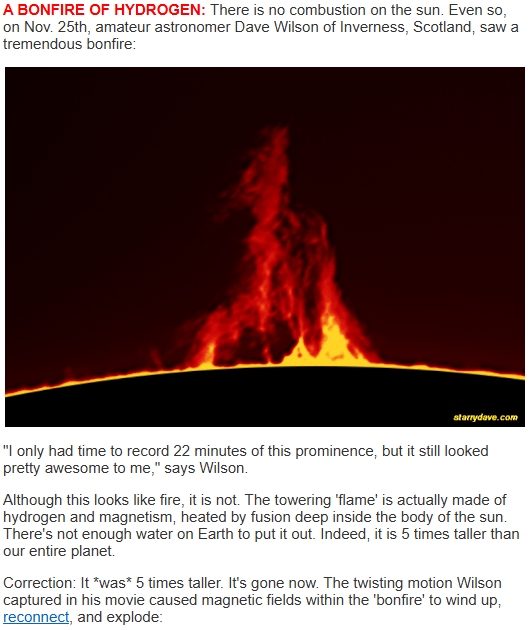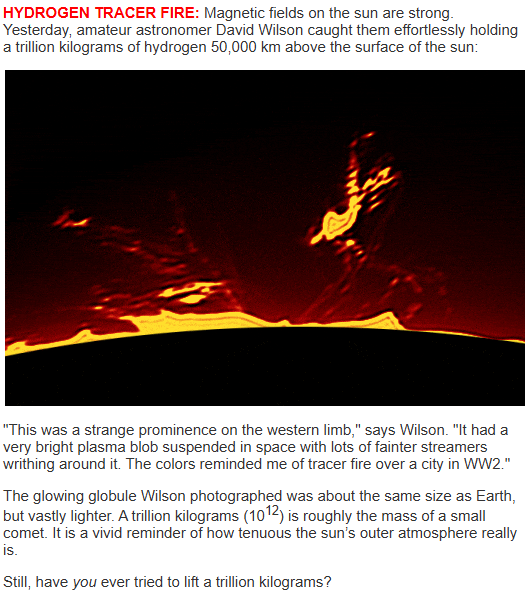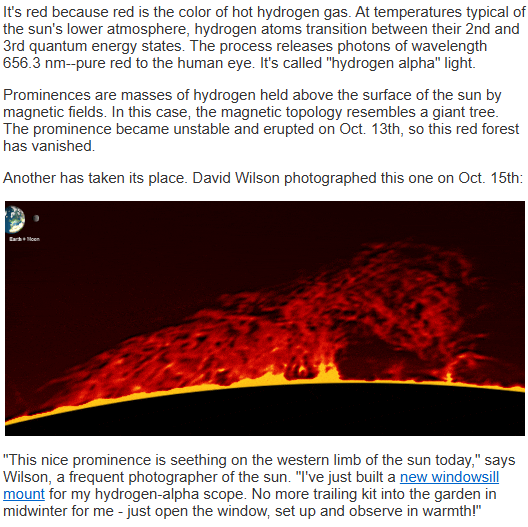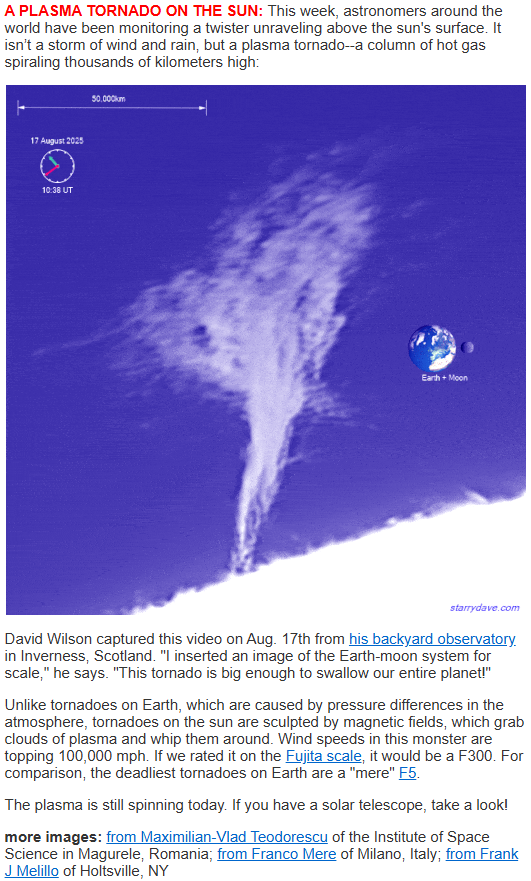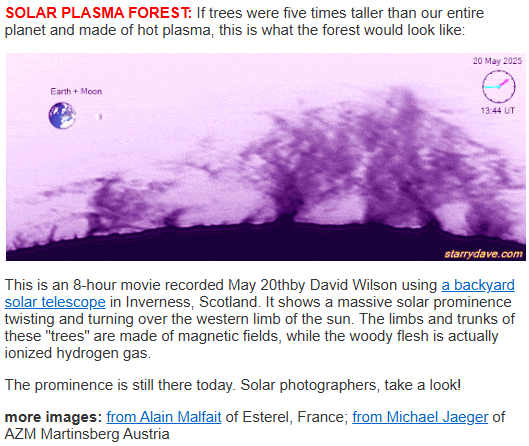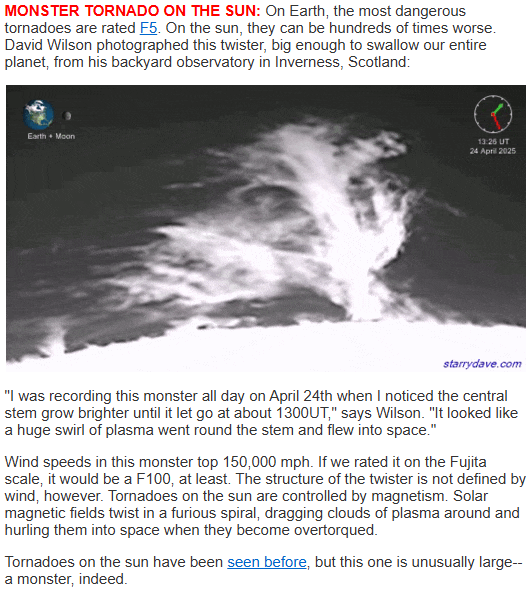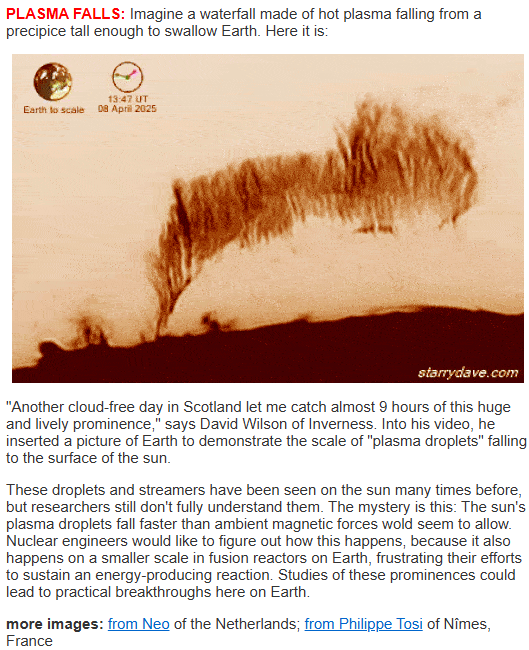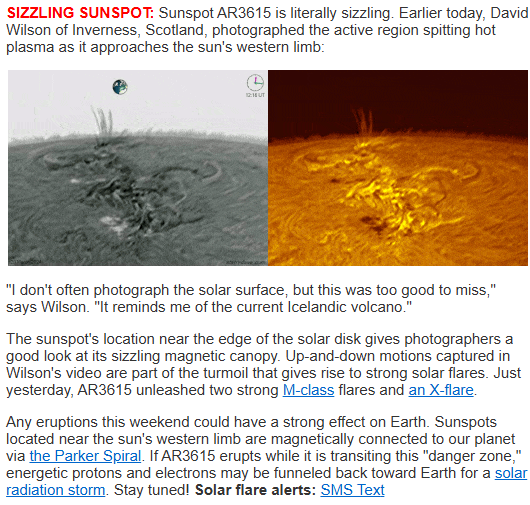One of my solar animations that I uploaded to Spaceweather.com was featured in a Newsweek article which you can read by clicking the image below.
I am really pleased that Spaceweather.com have featured my animations several times. They always add interesting scientific facts about each animation. These are shown below and you can click on the images to watch the animations.
Click here to see smoother colored versions on Imgur.
Fame at Last
I was really honoured to be featured on the front page of spaceweather .com recently. Click here to see the animation.
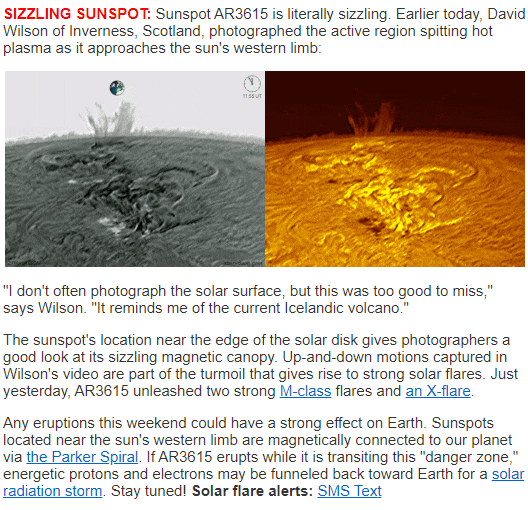
2023 Prominence Compilation
Above is a compilation of the solar prominence animations I captured in 2023 from Inverness, Scotland. Full details of equipment and software used are in the end credits.
Frisky Prominence
This was a short capture of a prominence that was very animated considering it only lasted 25 minutes.
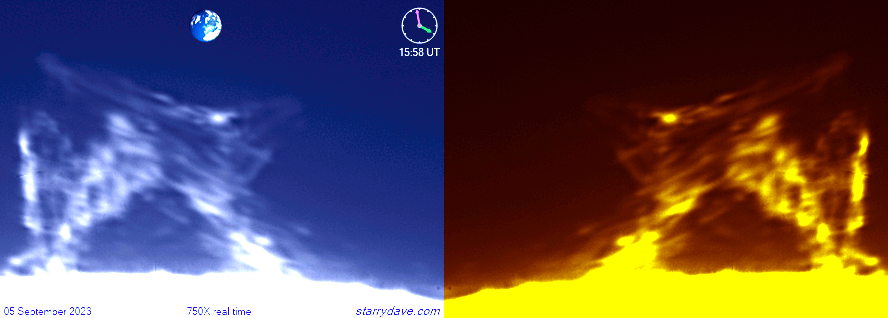
Captured with my 90mm PST mod, 2.5x barlow and DMK21 camera.
More of my animations are here.
Solar Tornado Blastoff
Lucky capture with my Coronado PST, Powermate 2.5x and DMK21 combo.
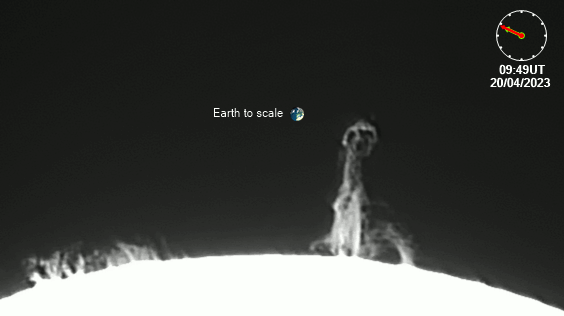
Dave’s Video Cleaner (DVC)
Here is a preview of my latest app DVC which is used to clean up astro videos.
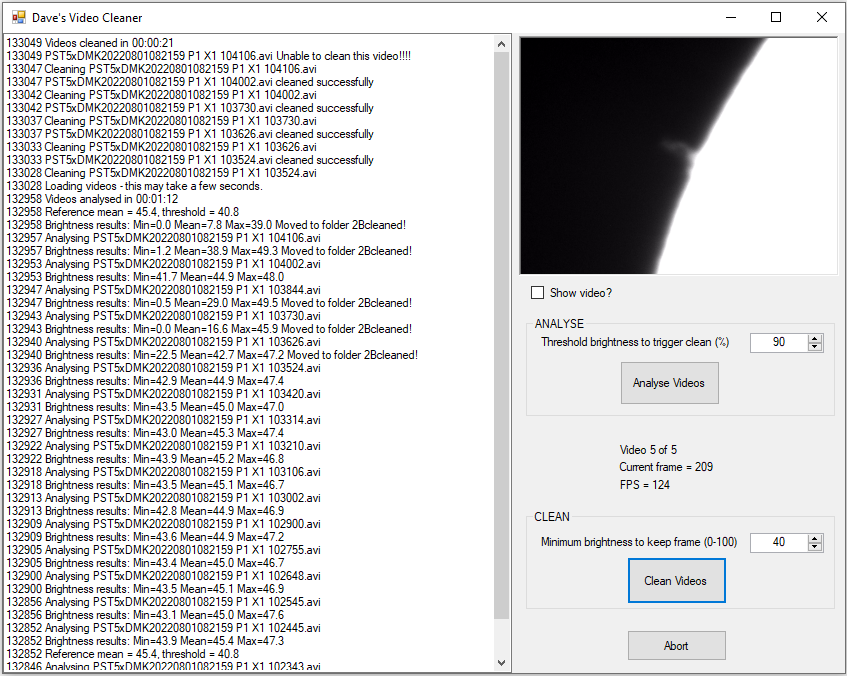
I capture hundreds of videos using DSSR over several hours to create my solar animations. These are then batch processed by Registax or Avistack. However, any dark frames caused by clouds can cause glitches or even shutdowns for the stackers. DVC works by first analysing the brightness of every frame in every video. Any videos with frames that are too dark are moved into a folder called “2Bcleaned”.
DVC then processes the videos requiring cleaning and creates a copy video with the darker frames removed. These can then be included with the ‘clean’ videos and batch processed by stacking software with no problems.
8 Hour Solar Rotation
This animation shows 8 hours of solar activity caught with my Coronado PST on June 23rd, 2022. Software used was DFM, DSSR, Avistack, Gimp, Advanced Renamer and DVS. It repeats in reverse so you can see the Sun’s rotation.
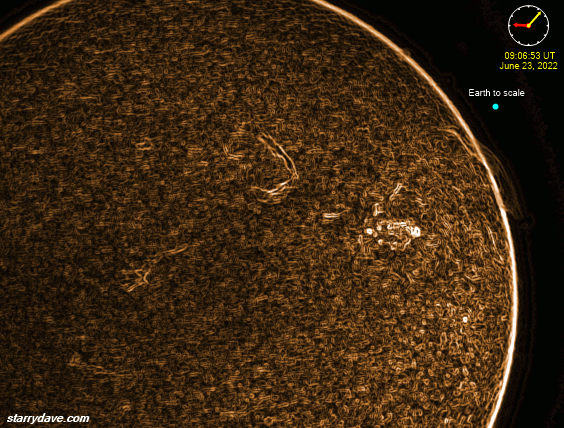
I also managed to catch a jet passing the Sun which is below at half speed.
Solar Animation Compilation
This is a compilation of my solar animations made between 2012 and 2020. Most were made with a Coronado personal solar scope and DMK21 camera. Watch out for the Mercury 2016 transit at the end.
Sunspot AR2738 13th April 2019 Timelapse
This was taken with my Coronado PST solar scope from Inverness, Scotland over 8 hours of sunshine. It repeats a couple of times at different speeds so you can watch the action.

